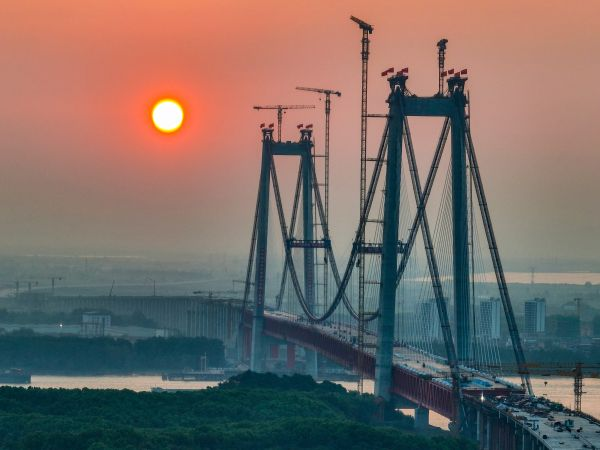
On August 27th, the main structure of the G3 Tongling Yangtze River Highway-Railway Bridge, the world’s first double-deck cable-stayed and suspension hybrid system bridge, was completed. The bridge was designed by China Railway Major Bridge Reconnaissance & Design Institute and constructed by China Railway Major Bridge Engineering Group. With the completion of the main span, the project has now entered the stage of constructing auxiliary works.

The G3 Tongling Yangtze River Highway-Railway Bridge begins at Huayuan Village in Chenyaohu Town, Tongling City, crosses the Yangtze River, passes through Yangshanjiao, and ends at Minzhu Village in Datong Town, Tongling City, with a total length of 11.88 kilometers. The bridge serves three crossing functions: expressway, intercity railway, and freight railway. The main span of the bridge is 988 meters. The upper deck is designed for a six-lane expressway with a design speed of 100 km/h, while the lower deck is designed for four railway tracks, including two for the Hechi Intercity Railway with a design speed of 250 km/h, and two for the Tongling South to Jiangbei Port Railway, which will later extend to Zongyang and connect with Anqing, with a design speed of 120 km/h.

According to reports, compared to cable-stayed or suspension bridges of similar scale, the new cable-stayed and suspension hybrid system structure of this bridge not only meets functional requirements but also offers higher economic efficiency and driving safety. It combines the rigidity of a cable-stayed bridge with the flexibility of a suspension bridge, providing the advantages of large span, heavy load capacity, and high stiffness. During the steel girder installation process, the bridge adopted a combination of construction techniques from both cable-stayed and suspension bridges. The two closure sections were located at the intersection areas of the cable-stayed and suspension cables on both sides, connecting the rigid and flexible structures and showcasing the bridge's designed alignment. This is a first in domestic bridge construction.